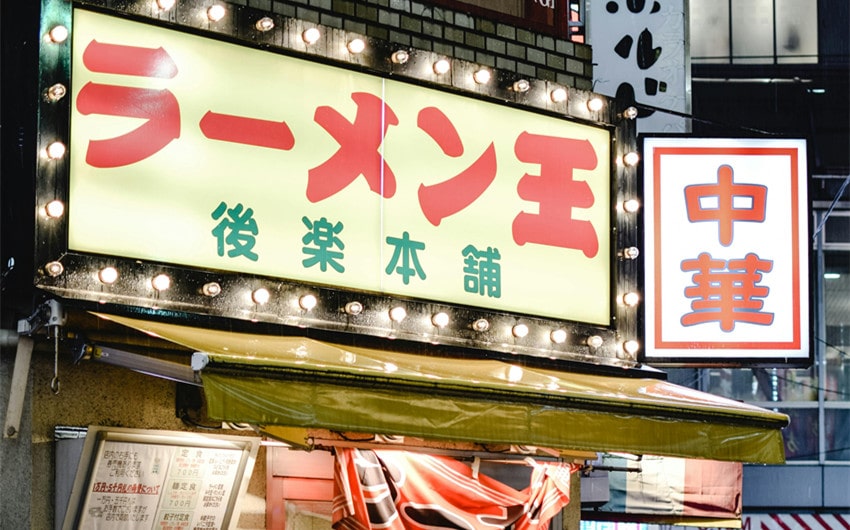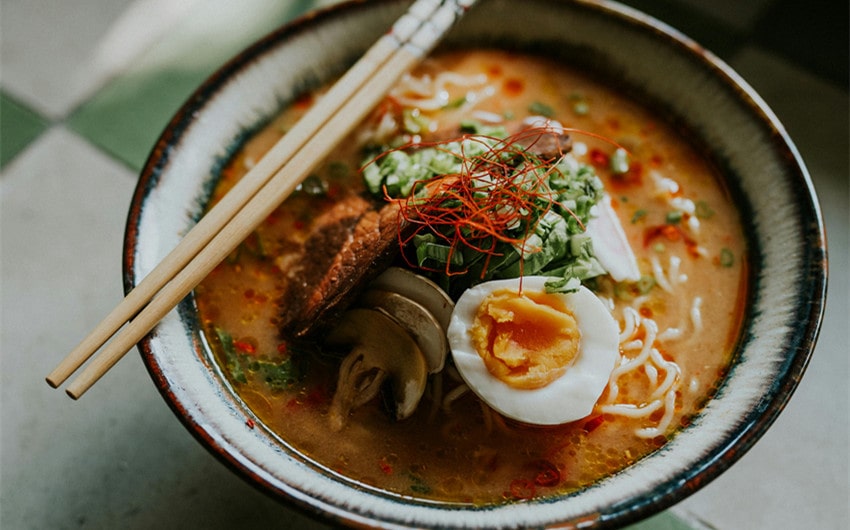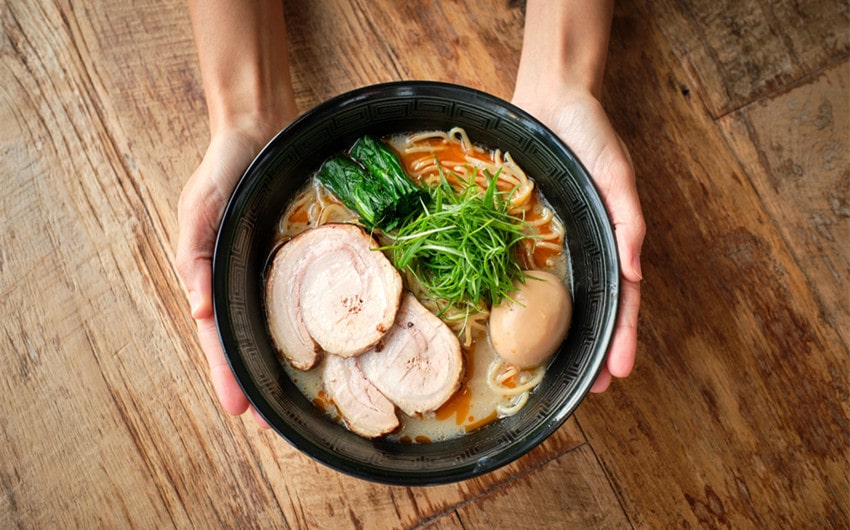Exploring Cultural Connections Behind Ramen Name Meaning
Few dishes are as universally loved as ramen—a warm, flavorful bowl of noodles that brings comfort with every bite. Whether enjoyed at a bustling Japanese ramen shop or as a quick meal at home, this dish carries a rich history. But have you ever wondered about the ramen name meaning?
The name itself has fascinating linguistic roots, tracing back to Chinese influences before evolving into a distinctly Japanese term. More than just a word, it reflects ramen’s journey through cultures and traditions. Let’s dive into the origins and significance behind the name that defines this iconic dish.
Linguistic Origins and Meaning of the Word Ramen

The word “ramen” carries a fascinating linguistic history, influenced by both Chinese and Japanese languages. While today it is widely recognized as a Japanese dish, the name itself originated from China, evolving over time as the dish gained cultural significance in Japan. Understanding the ramen name meaning requires exploring its roots in both languages and how it transformed into what we know today.
Chinese Origins – “Lāmiàn” (拉麺) and Its Meaning
The name ramen (ラーメン) is believed to have originated from the Chinese term “lāmiàn” (拉麺), which translates to “pulled noodles.”
- 拉 (“Lā”) means “to pull” or “to stretch,” referring to the hand-pulling technique used to make traditional Chinese lāmiàn noodles.
- 麺 (“Miàn”) means “noodles,” commonly used in Chinese cuisine to describe various noodle dishes.
In China, lāmiàn refers to hand-pulled wheat noodles, a style that remains popular today. These noodles were introduced to Japan in the late 19th or early 20th century by Chinese immigrants, particularly in port cities like Yokohama and Nagasaki. Over time, the pronunciation and preparation of the dish changed, leading to its distinct Japanese identity.
Japanese Adaptation – Transformation into “Ramen” (ラーメン)
When Chinese noodle dishes were introduced to Japan, they were initially referred to as “Shina soba” (支那そば), meaning “Chinese-style soba noodles.” However, as the dish evolved, so did its name.
- The pronunciation of “lāmiàn” was gradually altered to fit the Japanese language, resulting in “ramen” (ラーメン).
- The Japanese katakana (ラーメン) is a phonetic adaptation of the Chinese term, reflecting how the dish was pronounced in early Japanese ramen shops.
- The term “Shina soba” fell out of use, and “ramen” became the widely accepted name across Japan.
This linguistic shift was not just about pronunciation—it also reflected the evolution of ramen from a foreign dish into a uniquely Japanese culinary icon.
The Meaning of “Ramen” in Modern Usage
Today, ramen does not simply mean “pulled noodles” as in its original Chinese form. Instead, it refers to a distinct category of Japanese noodle dishes, characterized by:
- Broth-based noodles, with various soup styles like shoyu (soy sauce), miso, tonkotsu (pork bone), and shio (salt).
- Wheat-based noodles, which can be thin, thick, curly, or straight.
- Toppings and regional variations, making ramen a diverse and evolving dish.
While its name originated from Chinese “lāmiàn,” ramen has taken on a new and independent meaning in Japanese cuisine, symbolizing comfort, warmth, and culinary creativity.
Symbolic and Cultural Meanings of Ramen

Beyond its delicious flavors and comforting warmth, ramen carries deep symbolic and cultural meanings in Japan and beyond. It represents tradition, creativity, resilience, and communal dining, making it more than just a bowl of noodles. Ramen has evolved into a cultural icon, reflecting Japanese history, modern lifestyle, and even philosophical values.
1. Symbol of Comfort and Nostalgia
Ramen is widely regarded as a comfort food, providing a sense of warmth and familiarity. Many people associate it with childhood memories, late-night meals, and simple yet satisfying experiences.
- The steaming broth and rich flavors make it a go-to dish during cold weather or times of stress.
- It is often enjoyed after a long workday, late-night study sessions, or casual outings with friends, making it a symbol of relaxation and comfort.
- Instant ramen, introduced in the 1950s, became a nostalgic staple, reminding people of quick, affordable, and enjoyable meals from their youth.
In many ways, ramen represents a personal experience, with each bowl carrying memories and emotions unique to the individual.
2. Representation of Resilience and Innovation
Ramen is a dish that has constantly evolved—from its Chinese origins to its transformation into a Japanese staple and then to its global adaptation. This journey reflects resilience and adaptability, two key values in Japanese culture.
- Instant ramen, invented by Momofuku Ando in 1958, revolutionized food culture, showing how innovation can make food accessible and convenient.
- The variety of ramen styles across Japan demonstrates regional pride, creativity, and the ability to adapt traditional dishes into new, exciting flavors.
- Chefs worldwide continue to experiment with ramen, making it a symbol of culinary evolution and modern creativity.
Ramen’s history mirrors the spirit of perseverance—taking inspiration from the past while continuously evolving for the future.
3. A Social and Cultural Dining Experience
In Japan, eating ramen is not just about the food—it is also about the experience of enjoying it together.
- Many ramen shops are designed for quick yet immersive dining, where customers sit at a counter and watch their bowl being prepared.
- It is common to slurp noodles loudly, which is not only accepted but encouraged as a sign of appreciation and enjoyment.
- Ramen is often shared among friends, family, or colleagues, reinforcing a sense of community and bonding over food.
Whether eaten at a busy ramen shop, a casual home setting, or even from an instant cup, ramen represents bringing people together through a shared love for delicious and satisfying meals.
4. Symbol of Regional and Global Identity
Ramen is deeply connected to regional pride in Japan, with different prefectures developing unique variations that showcase their local ingredients and traditions. Some famous regional styles include:
- Hakata Ramen (Fukuoka) – Rich pork bone broth with thin noodles.
- Sapporo Ramen (Hokkaido) – Miso-based broth, often with butter and corn toppings.
- Tokyo Ramen – Light soy sauce broth with curly noodles.
- Kitakata Ramen (Fukushima) – Shoyu-based broth with thick, wavy noodles.
Beyond Japan, ramen has gained international fame, inspiring fusion dishes, gourmet ramen restaurants, and a global appreciation for Japanese culinary culture. It symbolizes how food can transcend borders and connect people worldwide.







